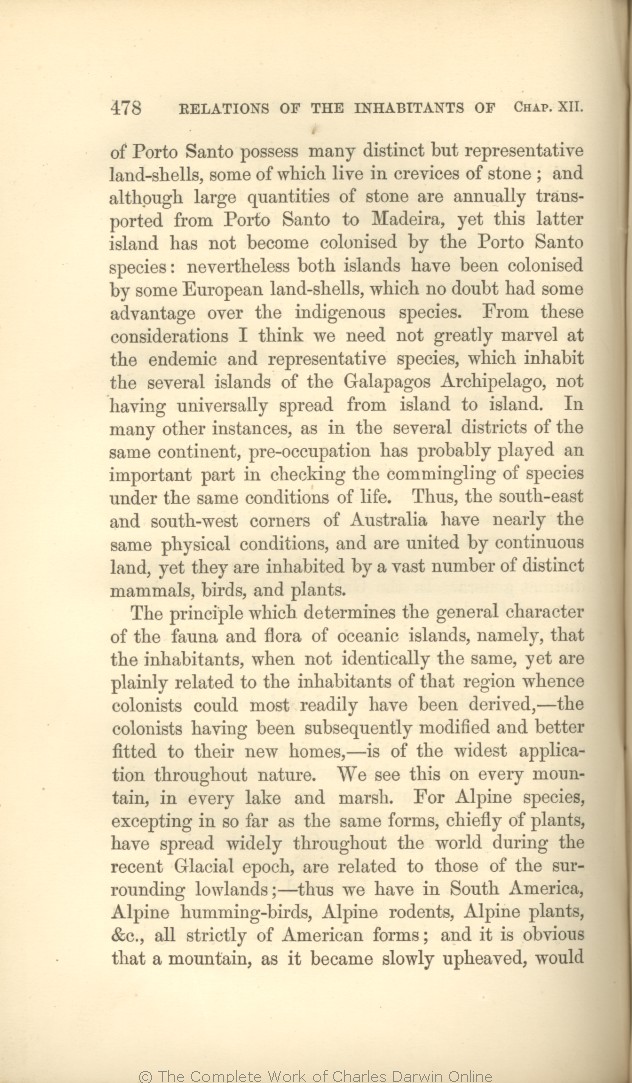of Porto Santo possess many distinct but representative
land-shells, | land-shells, 1859 1860 1861 1866 |
| species of land-shells, 1869 1872 |
| Madeira, 1859 1861 1866 1869 1872 | | Maderia, 1860 |
| some 1859 1860 1861 1866 | some 1869 1872 |
| and representative 1859 1860 1861 1866 1869 | and representative 1872 |
| species, 1859 1860 1861 1866 1869 | | species 1872 |
| universally 1859 1860 1861 1866 1869 | | all 1872 |
| In many other instances, as in the several districts of the same continent, 1859 1860 1861 1866 |
| On the same continent, 1872 |
| OMIT 1869 |
| pre-occupation 1859 1860 1861 1866 | | Preoccupation 1869 | | also, preoccupation 1872 |
| probably 1859 1860 1861 1866 1872 | | also probably 1869 |
| species under 1859 1860 1861 1866 |
| the species which inhabit different districts with nearly 1869 1872 |
| conditions of life. 1859 1860 1861 1866 |
| physical conditions on the same continent. 1869 |
| physical conditions. 1872 |
| plants. 1859 1860 1861 1866 1869 |
| plants; so it is, according to Mr. Bates, with the butterflies and other animals inhabiting the great, open, and continuous valley of the Amazons. 1872 |
|
The
principle which determines | principle which determines 1859 1860 1861 1866 |
| same principle which governs 1869 1872 |
| fauna and flora 1859 1860 1861 1866 |
| inhabitants 1869 1872 |
| that the inhabitants, when not identically the same, yet are plainly related 1859 1860 1861 1866 |
| their relation 1869 |
| the relation 1872 |
| inhabitants of that region 1859 1860 1861 1866 |
| source 1869 1872 |
| most readily 1859 1860 1861 1866 | most readily 1869 1872 |
| derived,— the colonists having been subsequently modified and better fitted to their new homes,— 1859 1860 1861 1866 |
| most easily derived, together with their subsequent modification, 1869 1872 |
| mountain, 1859 1860 1861 1866 | | mountain-summit, 1869 1872 |
| so 1859 1860 1861 1866 | | as 1869 1872 |
| forms, chiefly of plants, have spread widely throughout the world 1859 1860 1861 1866 |
| species have become widely spread 1869 1872 |
| recent 1859 1860 1861 1866 1869 | recent 1872 |
| lowlands;— 1859 1860 1861 1866 1869 | | lowlands; 1872 |
| plants, &c., 1859 1860 1861 1866 1872 | | plants,&c., 1869 |
| strictly of 1866 | | of strictly 1859 1860 1861 | | strictly 1869 1872 |
| American 1859 1860 1861 1866 |
| belonging to American 1869 1872 |
| forms; 1866 1869 1872 | | forms, 1859 1860 1861 |
|









